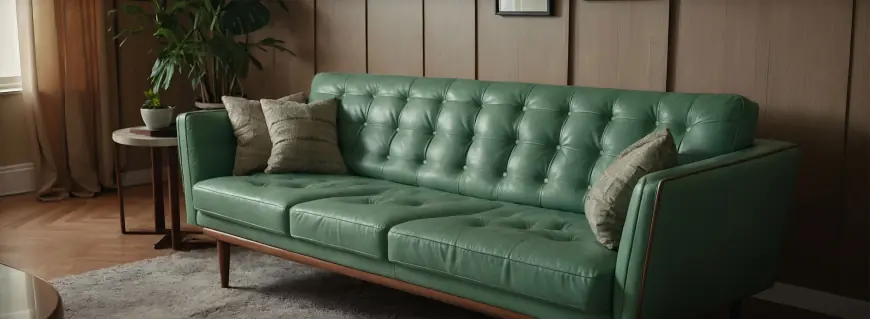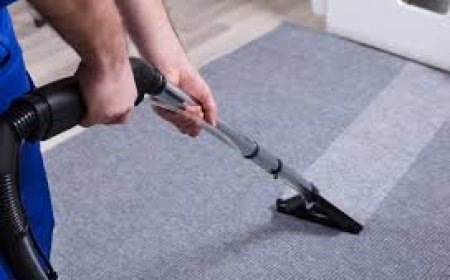Preventing Wear & Tear: How Staten Island Bars Can Extend Furniture Life
This guide will provide Staten Island bar owners and managers with practical tips to protect their furniture, reduce repair costs, and maintain a stylish and comfortable setting for patrons.

Bars in Staten Island see high foot traffic, frequent spills, and constant use of furniture, which leads to wear and tear over time. From bar stools and tables to lounge chairs and booths, maintaining furniture is essential for creating an inviting atmosphere and reducing long-term costs. Investing in high-quality furniture is one step, but proper maintenance strategies can significantly extend its lifespan.
This guide will provide Staten Island bar owners and managers with practical tips to protect their furniture, reduce repair costs, and maintain a stylish and comfortable setting for patrons.
The Importance of Furniture Maintenance in Bars
Bar furniture is more than just seating; it contributes to the overall ambiance, comfort, and customer experience. Well-maintained furniture reflects professionalism, enhances the venue’s aesthetic appeal, and ensures customer satisfaction.
Key reasons why Staten Island bars should prioritize furniture maintenance:
✔ Cost Savings – Regular maintenance prevents the need for frequent replacements, saving thousands of dollars.
✔ Better Customer Experience – Clean, sturdy furniture enhances comfort, encouraging customers to stay longer.
✔ Preserved Aesthetic Appeal – Worn-out furniture can make a bar look neglected, negatively impacting business.
✔ Safety & Liability Prevention – Damaged chairs, wobbly tables, or torn upholstery can lead to accidents, opening the business to liability risks.
By implementing a structured furniture maintenance plan, Staten Island bar owners can avoid unnecessary costs and keep their establishments looking top-notch.
Tips to Prevent Furniture Wear & Tear in Staten Island Bars
1. Choose Durable, High-Quality Furniture
Investing in commercial-grade furniture built for heavy use is crucial. Cheap, residential-grade furniture is not designed for the high-traffic environment of a bar. When selecting furniture, consider:
✔ Sturdy Materials – Solid wood, metal, and high-quality plastic resist damage better than weaker materials.
✔ Scratch & Stain Resistance – Opt for laminated or coated surfaces that withstand spills, scratches, and heavy use.
✔ Commercial-Grade Fabrics – Leather, vinyl, and stain-resistant fabrics last longer than standard upholstery.
Choosing furniture that is both stylish and built to last will save money on replacements in the long run.
2. Implement a Routine Cleaning Schedule
Dirt, grime, and spills accelerate furniture deterioration. A structured cleaning routine can preserve materials and keep furniture looking new.
✔ Daily Cleaning:
-
Wipe down tables, bar tops, and chairs with a damp cloth and mild cleaner to prevent grime buildup.
-
Vacuum and spot-clean upholstered furniture to remove dust and debris.
✔ Weekly Deep Cleaning:
-
Use furniture-safe disinfectants to sanitize surfaces and prevent bacteria buildup.
-
Check for loose screws or joints and tighten them before they cause bigger issues.
✔ Monthly Maintenance:
-
Apply protective treatments (such as leather conditioners or wood polish) to enhance durability.
-
Inspect furniture legs and frames for stability and reinforce weak areas if needed.
Regular cleaning and inspections prevent minor damage from turning into costly repairs.
3. Use Protective Covers & Coatings
Adding an extra layer of protection can significantly extend the life of furniture in a bar setting.
✔ Seat Covers & Slipcovers: Protect upholstered seating from spills, stains, and wear. Washable covers make cleaning easier.
✔ Table Protectors: Use glass tops, coasters, or waterproof table covers to prevent scratches and liquid damage.
✔ Floor Protectors: Attach rubber or felt pads to chair and table legs to prevent scratches on hardwood or tiled floors.
By using protective coverings, bars can reduce damage while maintaining a stylish look.
4. Train Staff to Handle Furniture Properly
Bar staff play a key role in furniture maintenance. Proper training can prevent unnecessary damage caused by mishandling.
✔ Lifting Instead of Dragging – Teach employees to lift furniture instead of dragging it across the floor to avoid weakening joints and scratching floors.
✔ Spill Response Training – Staff should immediately clean spills using proper cleaning solutions to prevent staining.
✔ Proper Stacking & Storage – Chairs and tables should be stacked or stored correctly to avoid undue stress on frames and legs.
By educating employees on proper furniture care, bar owners can minimize damage and extend furniture lifespan.
5. Control Humidity & Temperature Levels
Staten Island bars experience seasonal humidity changes, which can affect furniture materials.
✔ Wood Furniture: High humidity can cause wood to expand and crack, while low humidity can make it brittle. Using dehumidifiers in summer and humidifiers in winter helps regulate moisture levels.
✔ Metal & Leather: Metal components can rust in humid conditions, and leather seating can dry out and crack in excessive heat. Applying protective coatings prevents deterioration.
By maintaining a consistent indoor climate, bars can prevent environmental damage to furniture.
6. Invest in Professional Upholstery & Furniture Cleaning
Over time, dirt, grease, and odors accumulate on bar furniture. Hiring professional upholstery cleaning Staten Island services ensures deep cleaning that regular maintenance can’t achieve.
✔ Steam Cleaning for Upholstery – Removes embedded dirt and kills bacteria without damaging the fabric.
✔ Leather Conditioning – Prevents cracking and keeps bar stools and lounge chairs looking polished.
✔ Deep Cleaning for Wood & Metal – Professionals use specialized products to remove grime and restore shine.
A professional furniture cleaning schedule (every 6-12 months) helps preserve the integrity of bar furniture and maintain a fresh, inviting atmosphere.
When to Replace Furniture: Signs of Irreversible Damage
Even with the best maintenance, furniture eventually reaches the end of its lifespan. Knowing when to replace furniture is essential for maintaining bar safety and aesthetics.
???? Severe Structural Damage – If chairs wobble, tables are uneven, or frames are cracked beyond repair, replacement is necessary.
???? Persistent Odors & Stains – If deep cleaning no longer removes odors or stains, it’s time for an upgrade.
???? Outdated Appearance – Worn-out furniture can detract from the bar’s overall look, affecting customer perception.
???? Repeated Repairs – If maintenance costs exceed the cost of replacement, investing in new furniture is a better option.
By recognizing these signs early, bar owners can plan furniture upgrades without disrupting business operations.
Conclusion: Protect Your Investment with Proper Furniture Maintenance
For Staten Island bar owners, furniture is a long-term investment that directly impacts customer experience. By choosing high-quality materials, implementing a cleaning routine, using protective covers, training staff, controlling indoor conditions, and scheduling professional upholstery Staten island cleanings, bars can significantly extend the lifespan of their furniture and reduce unnecessary expenses.
A well-maintained bar not only looks inviting but also improves customer comfort and enhances the venue’s overall appeal.
Looking to Protect Your Bar’s Furniture?
Start implementing these maintenance strategies today to save money, improve aesthetics, and create a lasting impression on customers!
What's Your Reaction?
 Like
0
Like
0
 Dislike
0
Dislike
0
 Love
0
Love
0
 Funny
0
Funny
0
 Angry
0
Angry
0
 Sad
0
Sad
0
 Wow
0
Wow
0



















































